COLLECTION HIGHLIGHT
Home » Exhibits and Experiences » Starship Gallery » John F. Kennedy Lectern
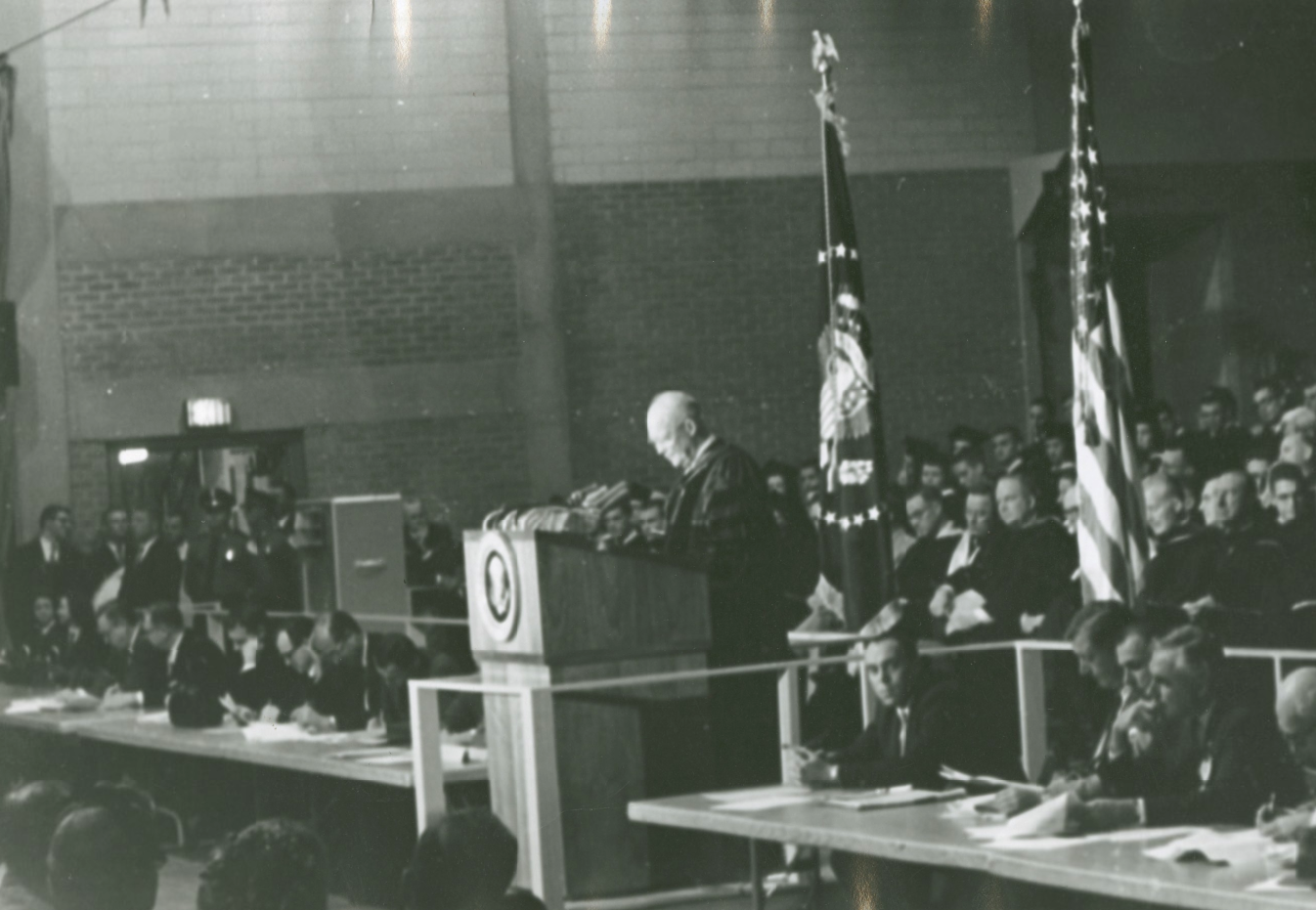
President Dwight D. Eisenhower addresses the convocation in William M. Rice Institute’s Autry Court on October 24, 1960. He is standing at a podium. A crowd of people are seated behind and next to him. / Source: “President Dwight D. Eisenhower speaking at Autry Court, Rice University.” (1960) Rice University: https://hdl.handle.net/1911/70616.
IBM developed the design for this lectern in 1954. While the exact production date of the lectern is unknown, the date stamp on its clock motor is 1957. The lectern features walnut veneer and framing. It is in three parts on casters, with fittings for microphones, power cords, incandescent lamps, electric timer and clock. It also features an adjustable document panel, motor and half the height adjustment mechanism below the desk frame, which made it unique and popular for use amongst addresses delivered by high-ranking officials.
The first documented image of the lectern being at Rice University was of President Dwight D. Eisenhower speaking at Autry Court October 24, 1960. The artifact arrived at Space Center Houston in 1992 as a gift from Rice University, commemorating its 30 years of operating the nation’s first space science institute.
An extensive search for other IBM lecterns of the period found many images of this type of lectern used by state and federal governments, corporations and universities during the last half of the 20th century.
This specific lectern has graced the presence of several historical figures, including President Eisenhower, President Jimmy Carter, then-Vice President Lyndon B. Johnson and NASA administrator James E. Webb. However, the most famous and well-documented instance of its use was during President John F. Kennedy’s iconic “moonshot” speech on September 12, 1962 at Rice University in Houston, Texas.
“But why, some say, the moon? Why choose this as our goal? And they may well ask why climb the highest mountain? Why, 35 years ago, fly the Atlantic? Why does Rice play Texas?
We choose to go to the moon. We choose to go to the moon in this decade and do the other things, not because they are easy, but because they are hard.”
John F. Kennedy, Address at Rice University on the National Space Effort, 12 September 1962
Early in 2023, a news story cast doubt on the authenticity of the lectern. The story was driven by claims that due to differences in the color, height and number of visible sections, the lectern at Space Center Houston was not the lectern that President Kennedy used for his famous “moonshot” speech. Space Center Houston took proactive measures to ensure the accuracy of historical representation and enlisted the help of a prominent artifact conservator.
Paul Spana and Carmina Mortillaro, Space Center Houston’s curatorial team, began authentication and conservation efforts by conducting extensive research into the historic context of the lectern.
To further authentication efforts, the team engaged prominent conservator Steve Pine to help establish the authenticity of the IBM lectern in April 2023. Pine retired in 2023 as Senior Decorative Arts Conservator at the Museum of Fine Arts, Houston after 32 years of service. As the first conservator hired by the Museum of Fine Arts, Houston, Pine cared for a variety of 3-dimensional objects that ranged from 17th through 21st-century furniture and decorative arts including gilding, upholstery, modern and contemporary design in wood, plastics and metal. He currently owns a private practice with a focus on furniture and objects conservation.
The team enlisted prominent clock appraiser Ralph Pokluda, past president of National Watch and Clock Collectors, Inc. (NWCC), to restore the non-functional clocks on the lectern’s desk. Pokluda stars on PBS’s Antiques Roadshow as their resident clockwork appraiser and has previously owned a Houston-based clock gallery appraisal and restoration business. In support of Space Center Houston’s mission, Pokluda generously provided his skills pro bono to bring the clocks back to working order.
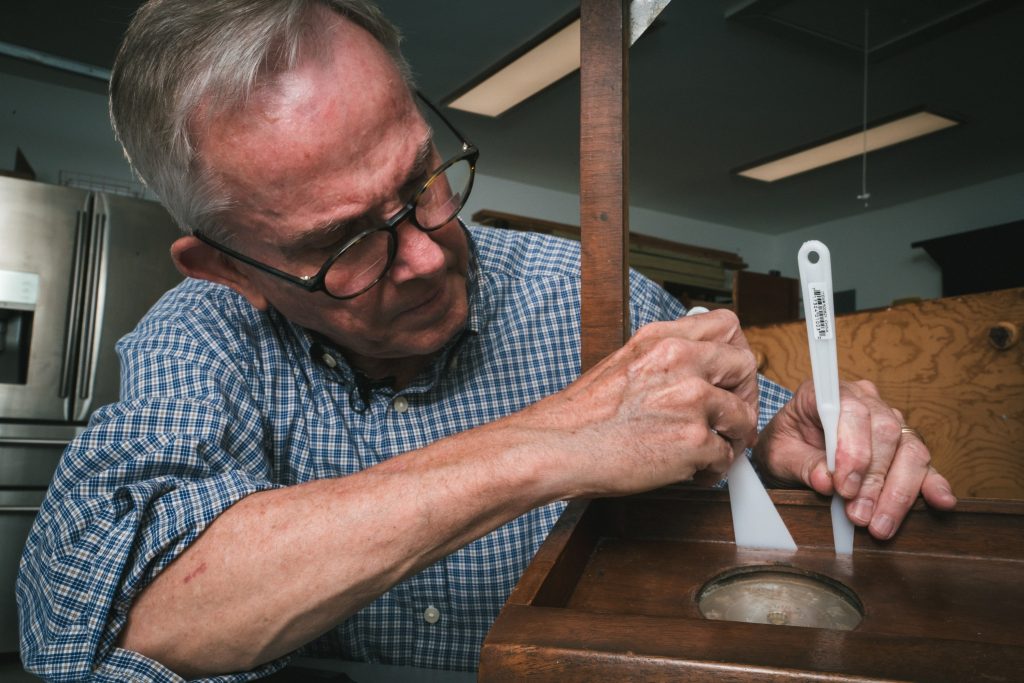
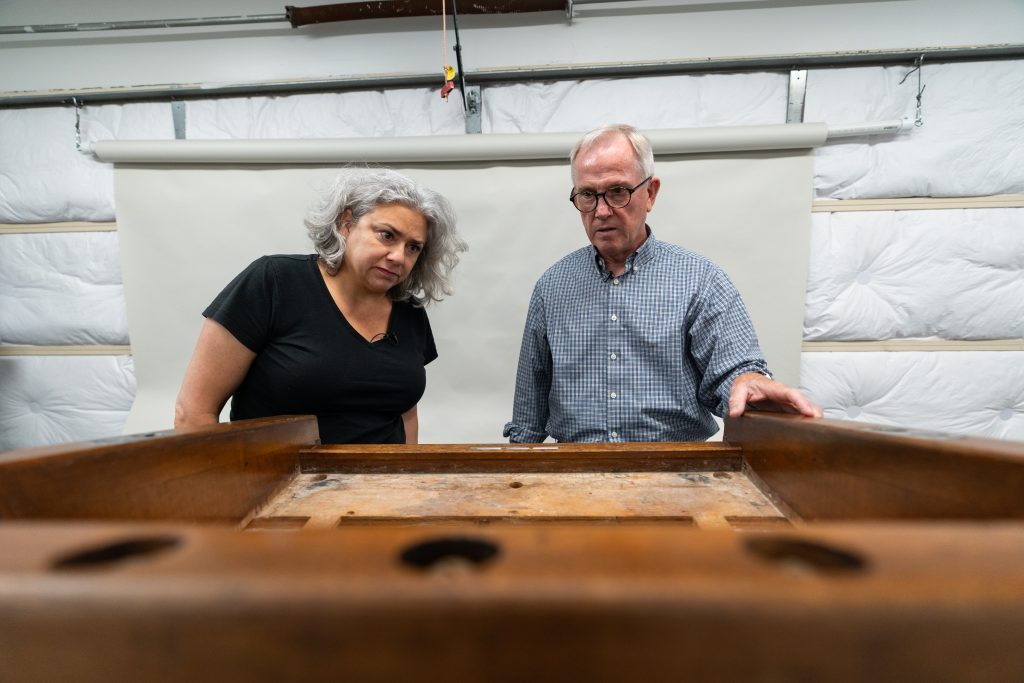
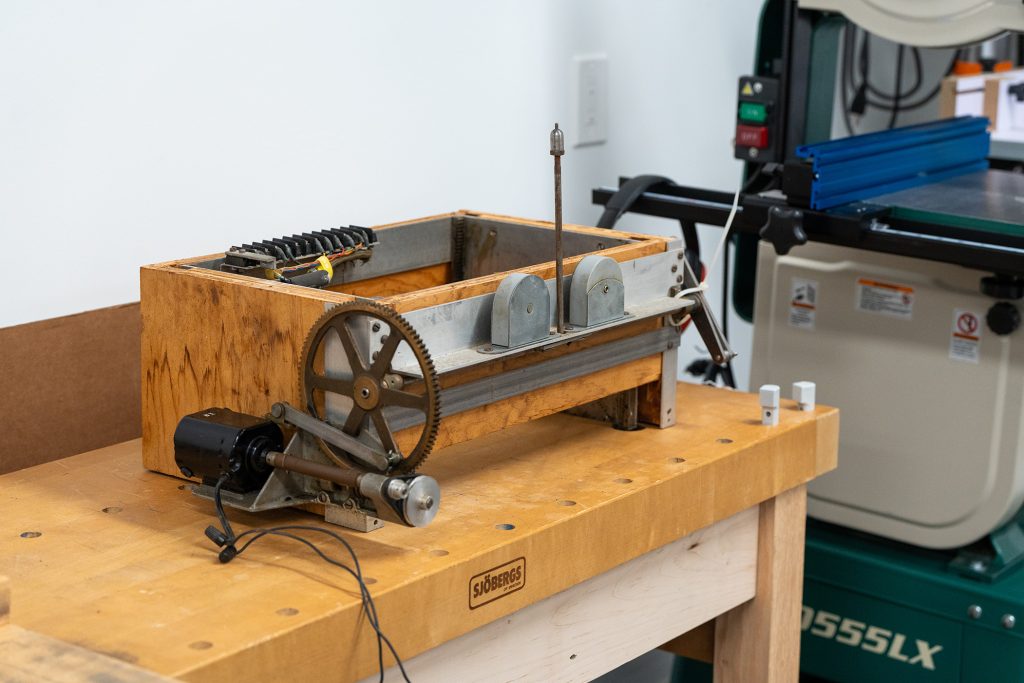
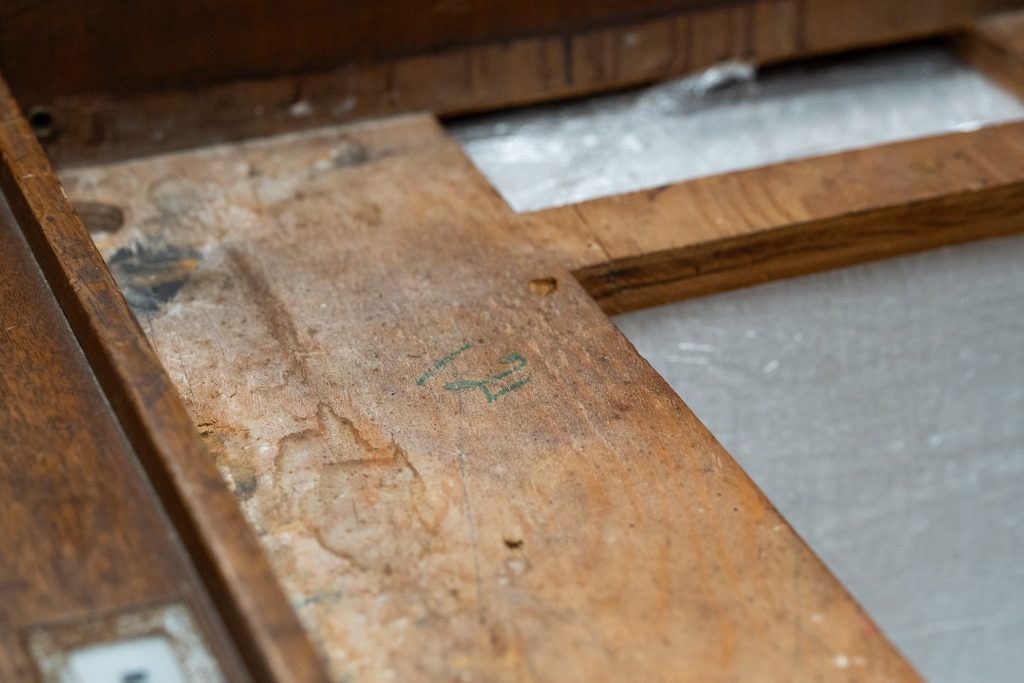
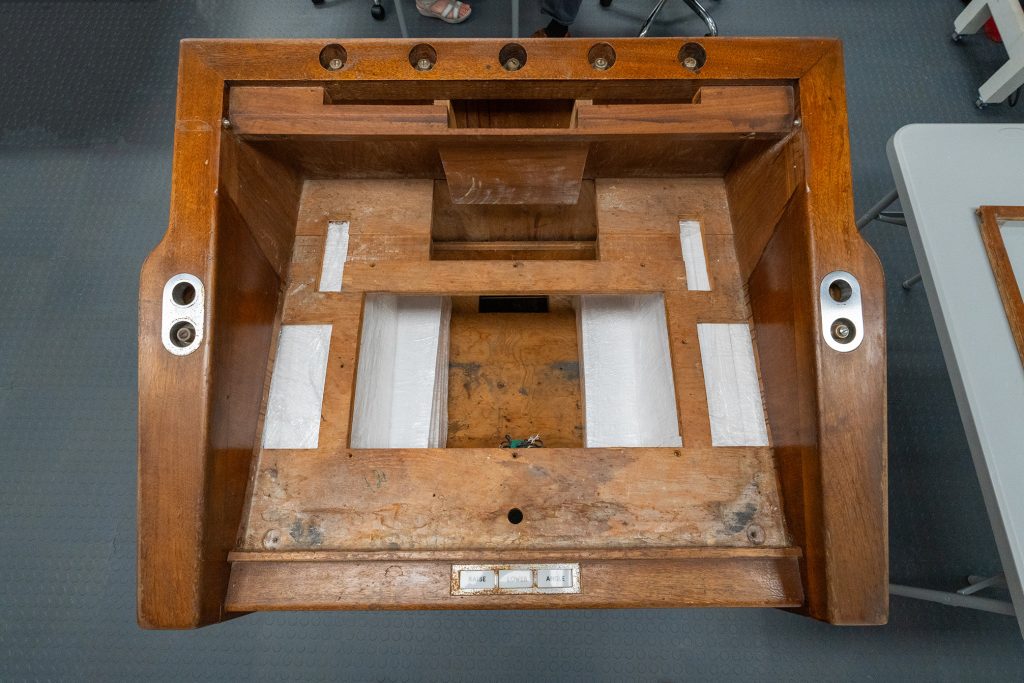
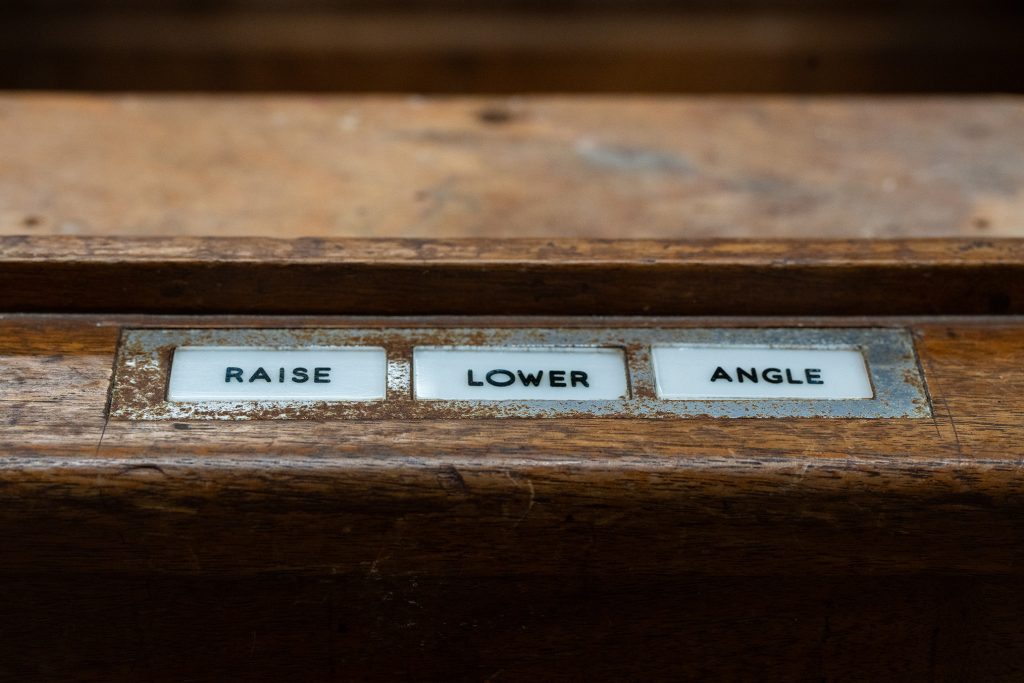
Pine and the Space Center Houston curatorial team thoroughly investigated and confirmed the lectern’s authenticity, putting an end to the debate surrounding this significant artifact.
Initial examination confirmed the wood grain pattern and three-part construction of the lectern is wholly consistent with the lectern in historic images of the President making the speech.
On removal of the thick layers of varnish that were applied to the lectern later in its existence, the wood grain patterns in the walnut veneer and solid walnut framing of the top section were found to match those features in all the images of President Kennedy giving his speech at Rice Stadium. The IBM lectern donated by Rice University is a rare survivor as only two other lecterns of that design were found to be more complete than this example.
FEATURE HIGHLIGHT
Pine and the Space Center Houston curatorial team used IBM lectern’s wood grain to definitively authenticate the lectern. Use the interactive slider below to compare the photo from President Kennedy’s “moonshot” speech to the present-day lectern.
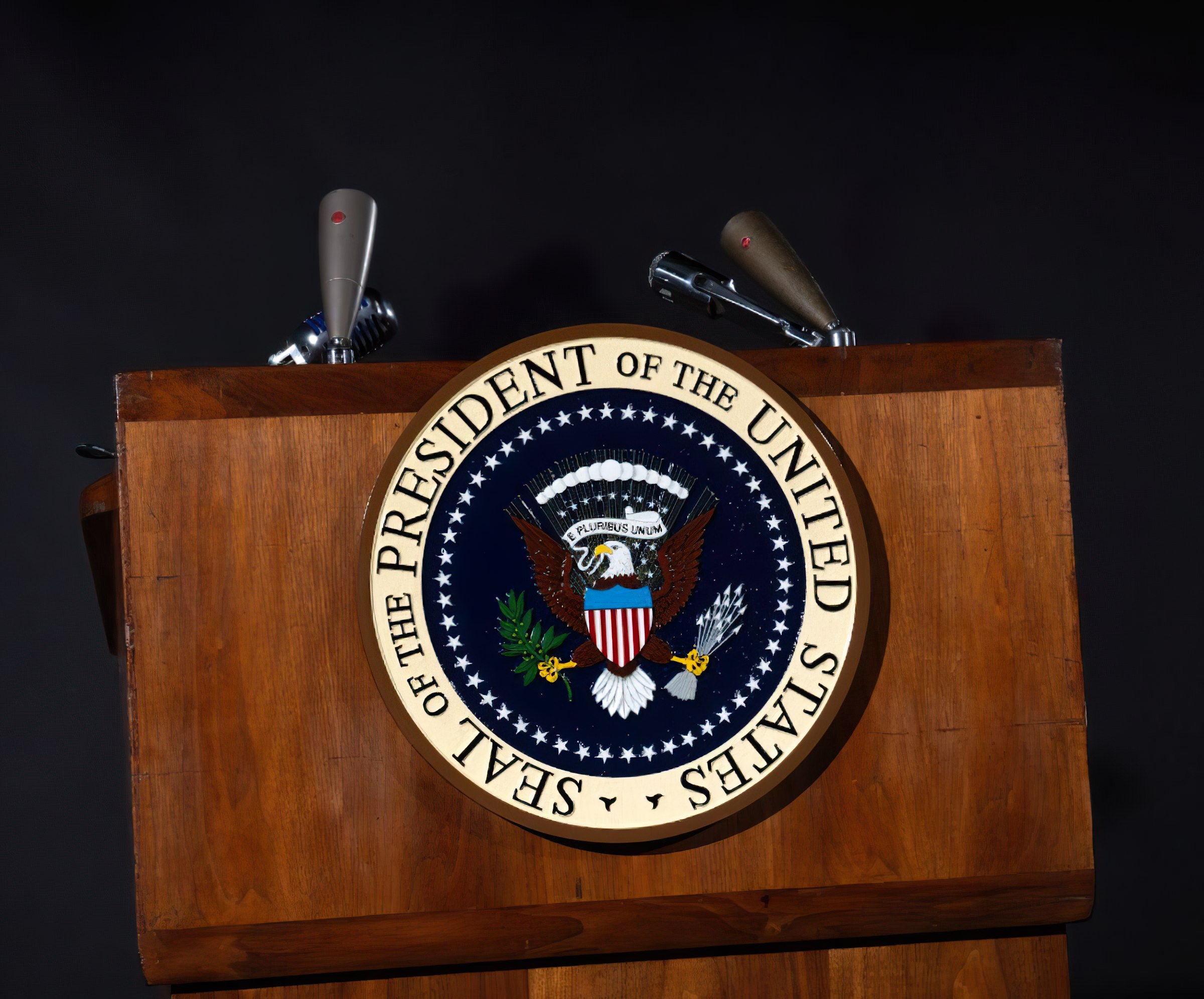 Restored
Restored
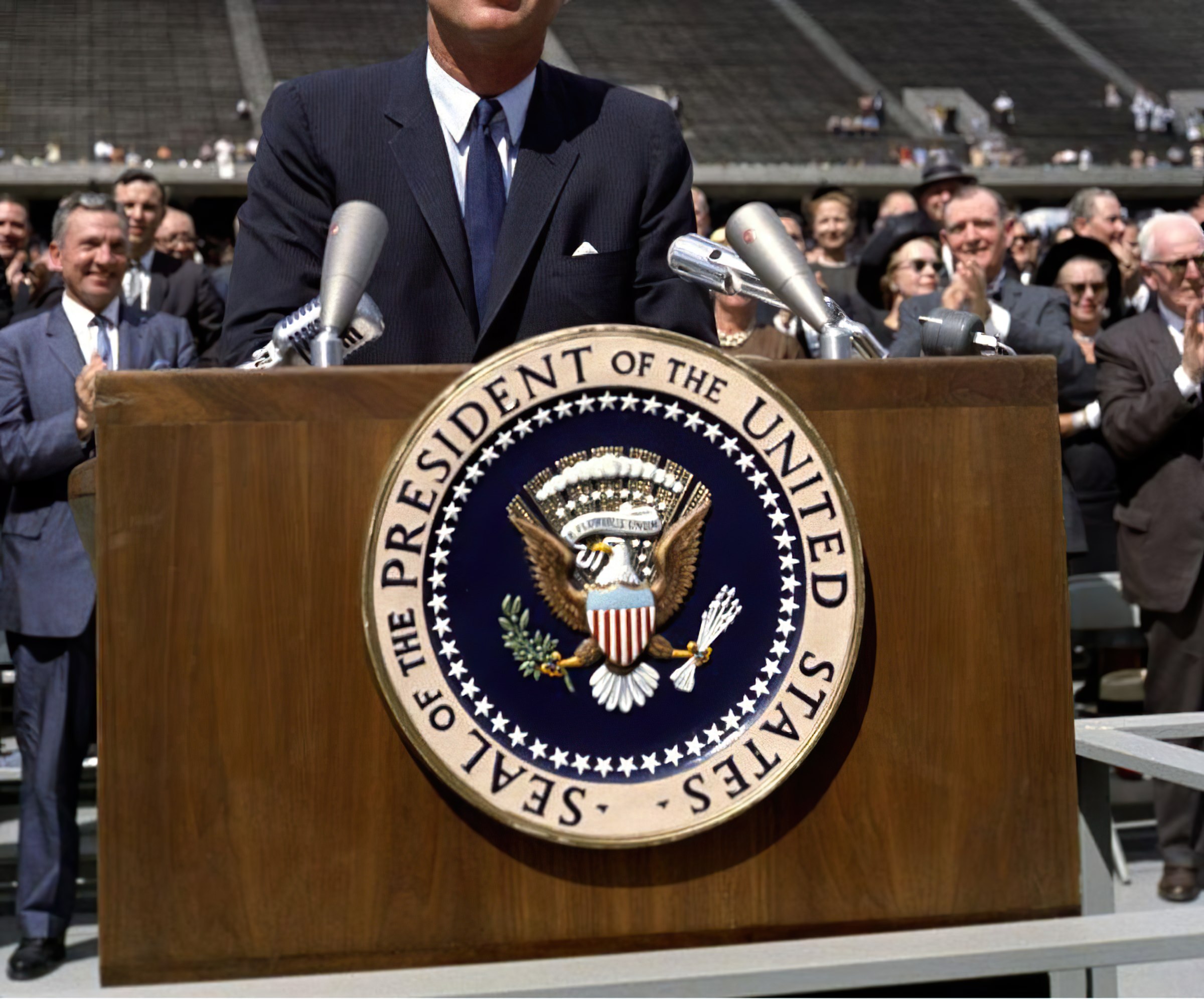 Original
Original
Conservation efforts on the lectern shed light on its original features. Tap the numbered circles below to learn more.
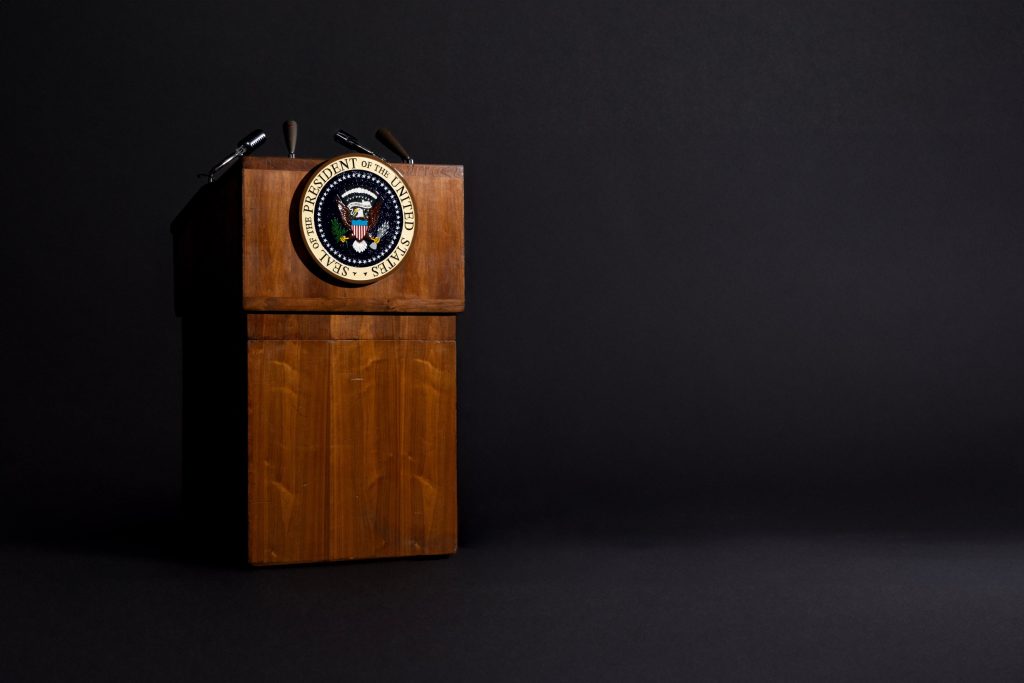
Included on the lectern on display is a partial replica of the speech featuring Kennedy’s handwritten notes. A last-minute addition to the speech that drew applause from the crowd at Rice Stadium: his inclusion of the question “Why does Rice play Texas?”
See the full exhibit in our Starship Gallery.
HOURS TODAY
NOW LAUNCHING . . .
Use code MBRTHANKS to get 10% off your membership when you join today! Access special offers like Double Discount Days in the gift shop (20% OFF) and join us for new events all year long.